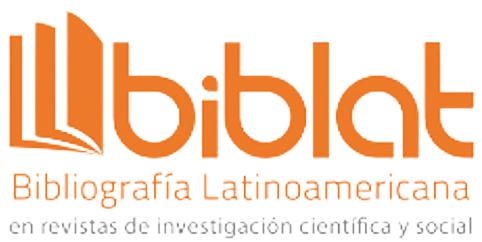Sistema de reconocimiento de voz y texto: Una herramienta para la autenticación basada en lectura aleatoria
Resumen
El presente artículo tiene como objetivo principal el desarrollo de un sistema de reconocimiento de voz y texto para mejorar la seguridad en la identificación de usuarios. Para el desarrollo del sistema se implementaron metodologías de aprendizaje profundo y diversas librerías de Python, incluyendo Speech_recognition, Pyttsx3, y Librosa, entre otras. El sistema fue evaluado en un entorno controlado utilizando 50 muestras de voz, obteniendo una precisión del 74 %. Los resultados indicaron que el 61.53 % de los errores se debieron a fallos en la identificación de la voz y el 30.76 % a discrepancias en la coincidencia del texto generado. Estos hallazgos subrayan la efectividad general del sistema, aunque también señalan la necesidad de ajustar los umbrales de similaridad y mejorar los algoritmos de reconocimiento para incrementar su precisión y robustez. Se concluye que el sistema presenta una solución prometedora para la autenticación biométrica de voz, mostrando un balance entre precisión y áreas de mejora que refuerzan su utilidad en aplicaciones de seguridad informática.
Descargas
Citas
U. Sumalatha, K. K. Prakasha, S. Prabhu, and V. C. Nayak, “A comprehensive review of unimodal and multimodal fingerprint biometric authentication systems: Fusion, attacks, and template protection,” IEEE Access, vol. 12, pp. 64 300–64 334, 2024.
S. Minaee, A. Abdolrashidi, H. Su, M. Bennamoun, and D. Zhang, “Biometrics recognition using deep learning: a survey,” Artificial Intelligence Review, vol. 56, no. 8, pp. 8647–8695, 2023.
W. H. Abdulla, F. Marattukalam, and V. Krivokuča Hahn, “Exploring human biometrics: A focus on security concerns and deep neural networks,” APSIPA Transactions on Signal and Information Processing, vol. 12, no. 1, 2023.
J. Zhang, G. Tu, S. Liu, and Z. Cai, “Audio anti-spoofing based on audio feature fusion,” Algorithms, vol. 16, no. 7, p. 317, 2023.
P. Jiang et al., “Securing liveness detection for voice authentication via pop noises,” IEEE Transactions on Dependable and Secure Computing, vol. 20, no. 2, pp. 1702–1718, 2023.
R. Zhang, Z. Yan, X. Wang, and R. H. Deng, “Livoauth: Liveness detection in voiceprint authentication with random challenges and detection modes,” IEEE Transactions on Industrial Informatics, vol. 19, no. 6, pp. 7676–7688, 2023.
——, “Volere: Leakage resilient user authentication based on personal voice challenges,” IEEE Transactions on Dependable and Secure Computing, vol. 20, no. 2, pp. 1002–1016, 2023.
T. Zeng, “Deep learning in automatic speech recognition (asr): A review,” in Proceedings of the 2022 7th International Conference on Modern Management and Education Technology (MMET 2022). Paris: Atlantis Press SARL, 2023, pp. 173–179.
D. Wang, X. Wang, and S. Lv, “An overview of end-to-end automatic speech recognition,” Symmetry, vol. 11, no. 8, p. 1018, 2019.
J. Li, “Recent advances in end-to-end automatic speech recognition,” https://arxiv.org/abs/2111.01690, 2022, accedido el 22 de octubre de 2023.
O. Adenuga and A. Oduroye, “Biometric authentication: A review,” 08 2023.
M. Labied, A. Belangour, M. Banane, and A. Erraissi, “An overview of automatic speech recognition preprocessing techniques,” in 2022 International Conference on Decision Aid Sciences and Applications (DASA), 2022.
P. Masci and C. A. Muñoz, “An integrated development environment for the prototype verification system,” Electronic Proceedings in Theoretical Computer Science, vol. 310, pp. 35–49, 2019.
C. P. Ivet, D. R. Yanet, and B. G. Roberto, “El lenguaje de programación python,” Ciencias Holguín, 2014.
G. D. Raúl, Python para todos. Creative Commons Reconocimiento, 2011.
S. M. M. Soldara, D. E. Campos Camacho, C. A. M. Guzmán, J. L. Torres Ramírez, J. Luís, and H. Chávez, “Selección de una herramienta de reconocimiento de voz analizando sus características,” Tecnológico Nacional de México en Celaya Pistas Educativas, vol. 2023, no. 146, 2023
Derechos de autor 2024 Innovación y Software

Esta obra está bajo licencia internacional Creative Commons Reconocimiento 4.0.
Los autores ceden en exclusiva el derecho de publicación de su artículo a la Revista Innovación y Software, que podrá editar o modificar formalmente el texto aprobado para cumplir con las normas editoriales propias y con los estándares gramaticales universales, antes de su publicación; asimismo, nuestra revista podrá traducir los manuscritos aprobados a cuantos idiomas considere necesario y difundirlos en varios países, dándole siempre el reconocimiento público al autor o autores de la investigación.
























